



ሰለ ምንታይ እቶም ብሉጻትን ብርሃን ሃገር ዝኾኑን ብወታደራዊ ክእለቶም ኮነ ብትምህርቶም ዘይተመልሱ::
Through the 30 years armed struggle as many educators of 1940s, 1950s and 1960s generation became victimised of atrocities, imprisonment and disappearances by the Ethiopian security forces as well as by the ELF and EPLF security forces. By and large during the liberation war especially in the late 1960s and 1970 Eritrean students, teachers and other educated classes were not only became a target of the Ethiopian government but many educated fighters were also victims of the Jebha and Shabia leaders. The same generation of the PFDJ and Opposition groups leaders had degenerated in the process; some of them violently crushed like the, Menkae group, the Falul group, Yemen group etc.
It is a tragic to see that how Eritrea has lost many young people and educators almost for more than half a century not only because of the war and the atrocity committed by the Ethiopian authorities but also due to all crimes committed by the former ELF & EPLF leaders and further got worse than ever since 1991 by the PFDJ leaders.
The purpose of this section is mainly to highlight the crimes committed on educated Eritreans by the former revolutionary leaders and their collaborators who are now members of the Eritrean government and opposition groups. It is also to draw attention of the younger generation on the impact of the culture of intolerance by the former revolutionary leaders which have still left a legacy within the opposition and PFDJ leaders in post liberation. As a consequence of the intolerance and fostering antidemocratic culture within the opposition group leaders caused for the proliferation more than 20 opposition groups which is greatly contributed for the prolong the suffering of Eritrean people with particularly the youth under this autocratic PFDJ regime.
The brief chronological background information which is presented below might assist for the young generation to understand that the crimes against innocent citizens with particularly educated Eritreans did not begin in 2001 by the PFDJ but has roots going back to the 1960s. Educated fighter like Kidane Keflu became the victim of the ELF leadership just because of criticising the leadership which the ELF (Jebha) leaders didn't want to hear.
In the early 1960s it is possible to say that the ELF campaign against Harakat (ELM) led to the exposure of the cell structure of the ELM which caused for the arresting of the ELM members by the Ethiopian security force. Most of the ELM member (Union of Seven) of radical nationalism was from students, workers, teacher’s artists and musicians of the 30s and 40s generations who became the victims of General Tedla Uqbit.
In late 1950s and early 1960s Tedla Uqbit was known for his ruthless suppression of actual and anticipated dissension so that by the beginning of 1960 he had managed to muffle all signs of opposition Eritrea.[source hedgait.blogspot.co.uk/]. Eventually Haraka (ELM) was terminated because of suppression from the Ethiopian security force and its military wing also liquated by the ELF in 1965
After Haraka (ELM) demise its former member joined the ELF without trying to revitalize the ELM or create a new organisation which greatly contributed in the changing the social composition of the ELF fighting forces in mid-1960s. With the arrival of young recruits from the highlands and lowlands the number of fighters was also growth from 800 to 2, 000 between 1964 and 1965 respectively. Prior to this the Eritrea Liberation Army was composed entirely of emancipated serfs from the lowland. In an interview with Omar Jaber, Mohammed Ali Idris a.k.a. Abu Rijela (1944 - 2010), one of the Disciples of Hamid Idris Awate, and one of the earliest military leaders of the ELF, credited with leading the Battle of Togoruba in 1964; had this to say about himself. "I was born near Agordat and joined the Sudanese army in April 1944 at the age of 17 (Ghirmay Yeibio, 2013)
I did not know the difference between Eritrea and the Sudan till 1956 when the Sudan became an independent republic. Abu Shanab, Mohammed Ali Tinay, and myself discussed about divorcing our wives and go to fight the Ethiopians. We joined Awate's unit of 20 fighters in [the spring of] 1962."2 These were the leaders of the revolution and so called "forefathers", who did not even know who they are let alone understand the problems of Eritrea and the Eritrean people.[ Ghirmay Yeibio, 2013).
Regarding the social composition of the ELF in the earlier 1960s, Gebre-Medhin (1989:171) states that with the demise of Harakat (Mahber Shewate) workers and intellectuals who had belonged to it turned to open resistance, and in a matter of a few years the social composition of the ELF fighting forces began to change because of workers and intellectual joined the ELF fighting forces most of them came from Christian and Muslim populations who were better educated, or workers influenced by the Haraka slogan..
“Muslims and Christian are brothers, and their unity makes Eritrea one” than the early soldiers from the Sudan.
However, this was not welcomed by the ELF leaders and former fighters, which created tensions and conflicts in the organization. Pool (2001:52) and Ammar (1997:75) point out that most of those who joined the ELF army in the mid-1965 came from the Christian and Muslim population who were better educated, or workers who were Harakat members but their arrival created tension and conflict in the organization. The conflict arose between the new comer who were used to be a member of Haraka, Young Federalists, Muslim Youth, Teacher Association and the banned trade union who belief that belief that “Muslims and Christians are brothers, and their unity makes Eritrea one, and ELF leaders who hated ELM because of their secular (Iyob, 1995:102). Iyob adds that young recruits from the highlands and lowlands educators were rudely awakened to the ugly realities from the factional politics of the ELF leadership. ELF recruits were particularly dismayed by the persistence of the corrosive Moslem-Christian schism
Gradually this led to conflict between new and old fighters in the organization, as the leadership still after Awate's death in 1962 was dominated by Muslims from Western Eritrea (Peter 1987: 57). Iyob (1995: 112) adds that young recruits from the highlands and lowlands were rudely awakened to the ugly realities from the factional politics of the ELF leadership. ELF recruits were particularly dismayed by the persistence of the corrosive Moslem-Christian schism. During this period of the ELF leadership decided to establish five military zones based on a territorial division in to defend their power control.
The main purpose of the Supreme Council to divide the army into five zone was not to restructure the ELF to accommodate the influx of the new arrivals with diverse religious, geographic, occupational and educational backgrounds- but to adopt measures that blocked any change they perceived as a challenge to the status quo and their power base, they also helped to foment religious and ethnic antagonism as a means of dividing and controlling the growing mass membership [Connell 1997: 56)
Case who professor of psychology states some leaders become more concerned with the benefit of power than fostering the group’s goals and organizational success. Indeed the Supreme Council of the ELF leadership divided the Eritrean Liberation army based on a territorial division which exacerbated the ethnic, religious and personal conflicts instead of minimizing the internal dispute. Case also states that leaders who do not enhance cooperation are protecting their power.
As resulted in intensive rivalry between different zones which was caused of inefficiency and disunity among the Zone Commands This shows that divisiveness is counterproductive to the group’s success. As a consequence of this division, in the 1960s students who joined the ELF from inside Eritrea and Ethiopia were not welcome by the ELF then became victim of the ELF leaders. Among the first students victims of the ELF leaders was Giliai from the Prince Mekonen School who joined the ELF after the three days students strike in 1965 Regarding this (Paice 1994, ; Markakis, 1987; Sherman, 1980, Waal,(1991:47) reported that in 1967 Osman Hishal, deputy commander of the fifth tonal division, summarily executed twenty-seven Christian fighters alleging poor performance or for the military setback from which they suffered.
Amar (1997: page 82) also states that Ghilai who was a political cadre in the 5th Zone was killed by ELF unit leaders Furthermore Usman Saleh Sabbea in his interview mentioned that Osman Hishkal from the Beit Juk was appointed after Weldai left. He had 27 Christians and Jabartis killed in 1967 as they left a store unprotected and the Ethiopians took the arms
In reaction to the execution of 17 Christian fighters by the deputy commander of Z5, Hishal Osman Woldai Kahasi gave himself up to the Ethiopian Embassy in Khartoum (Kibreab 2008: page 248)
During 1967-1968 as a consequence of the ELF leaders use religious prejudge and regionalism large numbers of ELF fighters most of them students like Haile Deru, Mussie Tesfamichael, Ermias Debessay etc gave themselves up to the Ethiopia government. According to Pool (1985) between 1966 and 1969 about 400 to 450 were either killed surrendered to the Ethiopian authorities, or fled to the Sudan. This is also confirm by Ammar (1997:74) who states that during those years, the student movement was weakened by arrests of key members in Asmara and several fighters from the ELF. The use religious prejudge and regionalism by the ELF leaders led to a temporary collapse of the student movement in Asmara and Addis Ababa.
Kidane Keflu former member of Haraket and student from the Haile Selease University who recruited many students to the ELF between 1962 and1966 also became disillusion from the sectarian and feudal leadership of the ELF while he worked with the ELF members in Kessala. Thereafter he wrote a letter to the Eritrean students who pursue their Studies at the University of Haile Selase to advise them not to join the ELF for the meanwhile until the circumstance within the ELF get better. Here is the copy of the letter written in Geez script might provide an overall picture of the ELF in the late 1960s.
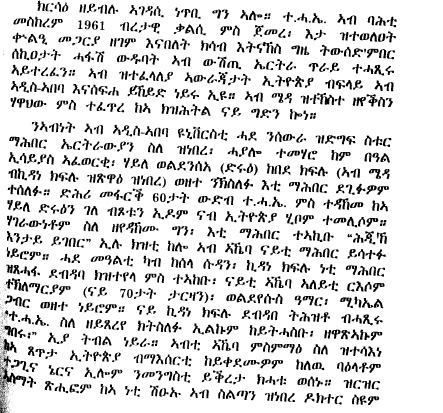
This piece of information taken from Tekie Beyne’s book kab Reiq p.123
Kidane Kiflu was also became the victm of the ELF leaders because of his dissenting opinion (Read how he was brutally murdered in Kassala) Paice (1994, 34)

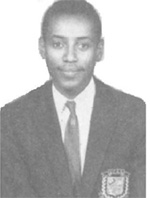
Kidane Kiflu as a University Student in Addis Ababa.source http://emnetu.com
Brief background information on Kidane Kiflu, how he was described by people who knew him closely
Kidane Kiflu after completing his Secondary school Education in Asmara, Kidane moved to Addis Ababa and enrolled at the then Haile Selassie 1st University. At the University he started in the Arts faculty majoring in Political Science. Two years later he joined the Law School. Humble and charismatic, Kidane Kiflu is known for his quick mind, courage and political cunning, traits that became tools for his political activities. Kidane was active in the struggle for Eritrean independence starting from his young age. Kidane gained the love of his country from an early age and he dedicated his life to Eritrea until the day he is murdered in cold blood the 5th of March 1970 in Kassala, the eastern city of the Sudan by the same movement that he joined to liberate his country. source ementu.com .
Ibrahim Berhan (2001) also states that Kidane is one of those gallant and brilliant fighters, TeGaDeLTi, who was assassinated in Kassala, Sudan in the late 60s.He was not only a heroic fighter who relentlessly opposed the sectarian and back warded political outlooks of the then Jebha,he was a decent person with exceedingly pleasant personality. Those who were incarcerated with him in Sudan's jail in the late 60s attest to those facts.Once he was released the butchers of the then Jebha killed him and put his body in a trunk of a taxi. So was the barbaric acts of QiYaDa ALaMa that left no options for the true and patriotic fighters that they have to emabark upon seeking a different path of pursuing the nationalist agendas (Read how he was brutally murdered in Kassala)
Other version of story from the ELF which is narrated by Gebremedhin Zegergis about kidane Kiflu Weldai Gide states that kidane Kiflu Weldai Gide and Kidane Kiflu establishing connections with Osman Saleh Sabbe as part of the conspirators to splinter and form a new organization and both were killed in Kassala. The splinters exploited this [incident] and repeated words: “Jebha [is] slaughterer and liquidator,” something that became their catch phrase. ( Awate Team http://www.gereger.com/data/media/Xknyfu.pdf]
The story which was narrated by Gebremedhin Zegergis completely unacceptable and is not true. According to Kebreab (2008, page 196) Kidane Kiflu’s correspondence with Jack Kramer in April 1960, Kidane wrote. Some leaders in the Front have Arabism as a sentiment instigating them and this sentiment is wholly undesired by the people of Eritrea. We are first Eritreans then Africans. We have no enmity or love is it for Israel or Arab. We do not base our analysis on their basis of dislikes and likes; we based our objectives on the understanding of matters through principles carefully and critically analyzed on the basis of neutrality. But for most leaders in the front the latter course is bitter to accept while Kidane seems to be concerned with the military and political implication of associating Eritrea with the Arab world in the immediate aftermath of the Arab-Israel war of 1967, he was also concerned with issues of identity. In his view, Eritreans were Africans and not Arabs.
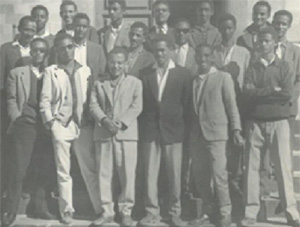
source http://emnetu.com/
Picture courtesy of Professor Araya Debessay. This is a picture when Kebede Kiflu was in his freshman year (1961 -62) at the University College of Addis Ababa (UCAA). Kidane is on the top left corner. Next to him to his right on the top is Daniel Yohannes, and next is Sennay Kifleyesus, next unidentified, Zerabruk Aberra, next unidentified On the Middle line from left to right are: Woldegabriel Tsehaie, Petros Gebre, Goitom Yoseph, Bairu Tafla, next unidentified, next unidentified. Front line: left to right: Al-
Habte Teclemariam also mentioned him briefly on facebook as following . “He was a great guy, dedicated for Eritrea's future, I met him in Asmara a day before he left for Kassala. Apparently, he was trying to tell me something but we had company at Bar Piccolo. Unfortunately, I never got to hear what he wanted to say. It certainly had something to do about leaving Asmara and probably knew about my brother's whereabouts.
In the mid 1960s clandestine group of Eritrean students at the University of Addis Ababa were formed probably by Kidane Kiflu. Since its formation there were a growing number of Eritrean university students from Ethiopia joined in the ELF, this was possibly after they were recruited by Kidane Kiflu. These students who joined the ELF in the 1960s were also not welcomed by the Kiada Al Ama, and they became victims of the ELF leadership, some of them were at the time referred to as " Sriya Addis" who were killed on mere suspicion of being Ethiopian agents. According various sources these fighters were made to endure unbearable torture at the hands of ELF interrogators; a large number of them were also summarily executed, this was mentioned by several writers (Paice 1994: 34; Human Rights Wartch 1991: 47; Mengesteab 2005: 43).Issayas was among the members of Kiada al Ama leadership who is responsible for the massacre of those students. read more
In the late 1960s the death of Kidane Kiflu caused much disillusionment among the ELF fighters one of them was Tuku Yehdego founders ofMahber Mahber Shew'ate (Union of Seven) in Asmara in 1959 who arrested twice in 1956 and 1962 respectively. After released from prison he joined the ELF in 1962 BUT LATER left the Front after the killing of Kidane Keflu in 1969 and sent a letter to the Eritrean students and other former members of Haraka in the Diaspora to inform them about the unstable political situation in the ELF and the Kiada Al Ama conspiracy to kill Kidane Kiflue and other fighters. His letter might have contributed for the split among the Eritrean students in the Diaspora at the meeting of General Union of Eritrean Students (GUES) in Munich in the summer of 1970. One group was, which had Dry Fit sum Ghebreselassie, Aregai Habtu, Habte Tesfamariam etc condemned the Kiada al Ama action and the other group, which had, Herui Tedla Bairu who didn't condemn the killing of Kidane Kiflue and Wlday Giday. In 1971
The death of Kidane Kiflu also caused much disillusionment among member of GUES which became the main caused for splitting member of GUES into two group this at the meeting of Eritrean students in Munich in the summer of 1970 which Dr Fistum chaired. This was happened after Tuku sent the letter to the member of GUES to inform them about the killing of Kidane Kiflue and other fighters by the ELF. Dr Fitsum and other members f GUES accused the ELF leadership of murdering Kidane and Giday.
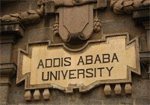
| In the mid 1960s clandestine group of Eritrean students at the University of Addis Ababa were formed probably by Kidane Kiflu. Since its formation there were a growing number of Eritrean university students from Ethiopia joined in the ELF, this was possibly after they were recruited by Kidane Kiflu. These students who joined the ELF in the 1960s were not welcomed by the Kiada Al Ama, and hundrend of them who were at the time referred to as " Sriya Addis" were executed on mere suspicion of being Ethiopian agents. According various sources these fighters were made to endure unbearable torture at the hands of ELF interrogators; a large number of them were also summarily executed, this was mentioned by several writers(Paice 1994: 34; Human Rights Wartch 1991: 47; Mengesteab 2005: 43). Issayas was among the members of Kiada al Ama leadership who is responsible for the massacre of those students. read more |
ከምቲልሙድናብሰውራዝስለፉብመንገዲኣስመራስለዝነበረኣብቲሰዓትእቲብቑጽሪ 150 ዝኾኑካብኣዲስኣበባተመሃሮዩኒቨርሲቲ፡ሰራሕተኛታትንክጋደሉምስወጹኢሳያስዓቕሉጸቢቡዎክንድዚዝኣክልምሁርወዲከበሳእንተተሰሊፉቦታኣይክረክብንእዩ፡ስለዚነዚኦምከሕቅቖምመሪጹ ብኸመይ? ብሽምደቂመታሕትሓሪደሞምኢሉ።ስለዚሰውራማዕቢሉኣብዚደረጃኣብዝበጽሓሉጸላኢብዙሓትሰለይቲ እዩዝሰድድእንዳበለነቶምገዳይም ደቂመታሕትግንትምህርቲዘይነበሮምተዛሪቦምዘስምዑስጉምቲክወስዱደጋጊሙይደፋፍኦምኔሩ።ከምዝፍለጥስዉ/ ስዒድሳልሕንስዉ / ዓብደልቃድርሮሞዳንንካልኦትንኣጥቢቖምይቃወምዎኔሮም።እዚሰብዚምስኣሕዋትናደቂከበሳከባእሰናእዩ፡ጃሱስእዩይብሉኔሮምግንተሰማዕነትኣይረኸቡን።ኢሳያስ ቀንዲተሰማዕነትክረክብዝገበሮእግሩሜዳምስረገጸካብዚኹሉ ወዲከበሳተቐዳዲሙትግረንዓረብንእዩተማሂሩ ገዲምተጋዳላይስዉ/ ዓፋኣሕመድ ( ኩናማ ) ከምዝሓበረኒኢሳያስነቶምደብዳቤሒዞምዝኸዱተጋደልቲደቂመታሕት ኣብሓደጽላልንበይኖምንነዊሕከዛርቦምከሎኣማዕድየይርእዮኔረ፡ብዛዕባእንታይይዛረቦምኔሩግንኣይፈለጥኩንይብለኒታሪኽሰለሙንወልደማርያምእምበኣርካብዚእያትጅምር።ስርያኣዲስኩሎም 186 ተጋደልቲእዮምኔሮእምበኣር
source Dekeba ካብ 1965 ንደሓር ዝተገብረ ግፍዕታት ብመንግስቲ ኢትዮጵያ ኣብ ምዕራባዊ ቆላ ዘስዓቦ በደል ብኣሻሓት ዝቑጸር ኣካል ህዝብና ንስደት ስለ ዘምረሔ፡ መንእሰይ ከበሳ ስቕ ኢሉ ኣይረኣዮን፡ ካብ ከተማት ኤርትራ ኮነ፡ ካብ ከተማት ኢትዮጵያ ሕነ ንኽፈዲ ንመዳ ኤርትራ ናብ ቃልሲ ኣምርሔ፡ ኣብ መዳ ግና ከምቲ ዝተመነዮ ኣይጸንሖን። ካብ ዜጋኻ ዘይትጽበዮ ሽግርን፡ ተጋድሎን ጸንሖ። ቃልሲ፡ ከቢድን መሪርን ነበረ።ኣብ ቃልሲ ኣትዩ እጃሙ እና ኣበርከተ፡ ከም ሰላይ ተቖጺሩ ዝተቐንጸሉ፡ ዉሑዳት ኣይኮኑን። 1969 ድሕሪ ጉባኤ ኣደቡሓ እንታይ ተርኽበ?፡ ናይ ዉድብ ምብትታንን፡ ምፍንጫልን፡ ኣብ መንጎ ተጋደልቲ ኣቀናጻልን ነበረ።1977 ፋሉል ተባሂሉ ዝተቐንጸለ ተጋዳላይ ዉሑድ እኮ ኣይነበረን። ናብ ህግደፍ ኣትዩ ኣብ ኩናት ባጽዕ ኣትዩ ብጨው ተበልዔ። መንእሰይ ከበሳ ብኽልተ በትሪ ተቐጥቐጠ፡ ንኽሃድም ዝተገብረ ብመራሕቲ ተሓኤ፡ ተረሲዑ ድዩ? source ሃይለ ገብረትንሳኤ Negassi Melake in his comment post to facebook relate to Siriyet Addis also mentoned that those 150 Haile Selassie 1st University students were of those ear marked revos of the time. Quite a number of them were punished by the then state. Their belief and objective was to raise arms and fight against the system. However, they considered ELF as a "democratic movement that struggle for system change". Their preference to join ELF was because it was the only organized group then (?) . As far as the secret liquidation is concerned it was made public because of one of them who happen to escape after they left him assuming he were dead. That person, by the name Tesfaye(?), was taken to Khartoum by people who were against the leadership and got medical treatment. He might be alive even now, although he might prefer to close his mouth for fear of retaliation. Those who were members of EPLF have disseminated a story that makes Isaias clear of the case. On the mainland people have no idea of this massacre of 149 university students who were from different corner of Ethiopia. I met some who discarded the case asserting the students to have been Amharas or else agents of the then state. Those crucified by the then state can't be agents of the state. University students, after this, became suspicious of the movements in Eriteria. Sceptic or else opposition became a normal behaviour since then. No wonder. If These people consider other natives not "from us" or not Us" then the only alternative were to avoid them if no opposition in any form is part of their mechanism. Isaias' part was suspected even though he is defended by the would be innocent EPLF members of that time. A lot of university student know him and about him in that short life span in the university. .... |
Dr. Fitsum
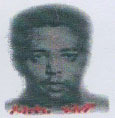
Dr. Fitsum after graduating from Addis Ababa University where he was a prominent member of the progressive student movement went to school in Belgrade, Yugoslavia and was of this student t that joined the ELF from Yugoslavia after passed his PhD in the early 1970s. There was a question about the death of Dr Fistum the ELF. Dr Fitsum could be one of the Addis Ababa University students who were recruited by Kidane Kiflue in the mid 1960. In 1970. He was a member of the ‘other’ 19-person Executive Committee Elected by 1st ELF Congress in 1971
ንስዉእዶክተርፍጹምኣብክራማት 1972 ኣብከባቢሰንዓፈረኺበዮ።ሽዑጸጕሩነዊሕኮይኑ፡ዛዕኰርኰር ዝበለ፡ምልኩዕግንጸሊምነይሩ።ኣነውዱብትሓኤኮይነምስቲሽዑዝነበረሕንፍሽፍሽናይህሓሓኤዶተሓኤዝብልኵነታት፡ምሳይብዝነበሩውዱባትበዓልስዉእእትጎይትኦምንገረዝግሄርንወልደርፍኤልንንዶክተርፍጹምብምርካብንጹርሓበሬታንምምጻእየተላኢኸ።ዶክተርፍጹም፡ምስገለሓሙሽተዝኾኑብጾቱኣብሓደበዓቲመሳሊቦታኢናተራኺብና።መልእኽቱብሓጺሩከምዚዝብልነይሩ።ኣብዚእዋንዚዘድሊህዝቢምንቃሕማለትጸላእቱመነመንምዃኖምከምዝፈልጥምግባር'ዩ።ካብዚወጻኢ "ኢዲኻፒ"ዝብሃልማለትተሓኤዲኻህሓሓኤዲኻዝብልዘረባክተልዕሉዎየብልኩምን።ዝብልምኽርንሓበሬታንከምኡውንመጽሔታትሂቡኣፋንዩኒ።ምሳይናብቲቦታመሪሑኒዝኸደኣማኒኤልፋቶሪኖሰታዮዝነበረኮይኑነቲመጽሔታትባዕሉኣብኣውቶቡስኣንቢሩዎስኣስመራምስበጻሕናኣረኪቡኒ።ኣማኒኤልክሳዕሕጂኣበይከምዘሎደሃይየብለይን።ዶክተርፍጹምከምዝተሰውአምስሰማዕኩመሪርሓዘንተሰሚዑኒ።ድሒረኣብርሃለይክፍለከምዝቐተሎንመራሕቲጀብሃብረትክፍትንከሎተባሪዓቶስትሰዊኡዝብልዘረባከምዝፈነዉፈሊጠ።ጠንቂመቕተሊኡስምረትክልቲኡውድባትኣይተርፍንዩይብልስለዝነበረእዩ።ብሰንኪመራሕቲክልቲኡውድባትመንእሰያትሃገርክሳዕሕጂይጸንቱኣለዉ።source facebook comment posted by Stefanos Temelso
Those who volunteered joined the ELF to take up arms were met with suspicion, mistrust and even bullying, by and large many educated fighters of the 1940s and 1950s generation became the victims of the ELF and EPLF, this was included during the civil war and purging periods which will look at it briefly in part 4b, 4c, and 4e.
[Back to the Table of contents]-------- [NEXT PAGE]
ehrea.org © 2004-2017. Contact: rkidane@talk21.com | ||||